What makes a garden plant special? Beautiful flowers? Reliability? Long season of bloom? Easy care? Attractive to butterflies? Maybe even useful for humans? Mountain Mint checks all the boxes! This perennial garden plant is so valuable it’s a wonder we don’t see it everywhere.
The only problem with Mountain Mint is its name! The scientific name, Pycnanthemum, is a mouthful, and the common name “Mountain Mint” is just wrong. The plant does not come from the mountains, and it’s not a true mint. It’s actually a plant native to America’s meadows, from New England to the Midwest and from Florida to Texas. And unlike spearmint and peppermint, it is not in the mint genus, Mentha. (Though it does have a decidedly minty flavor, and can be a pretty good alternative.)
We have three species of Mountain Mint at the Nature Center: Pycnanthemum virginiana (“Virginia Mountain Mint”), Pycnanthemum tenufolium (“Narrow-leaved Mountain Mint”) and Pycnanthemum muticum (“Broad-leaved Mountain Mint”). All three grow in our Meadow in full sun, average soil, and without special care or irrigation.
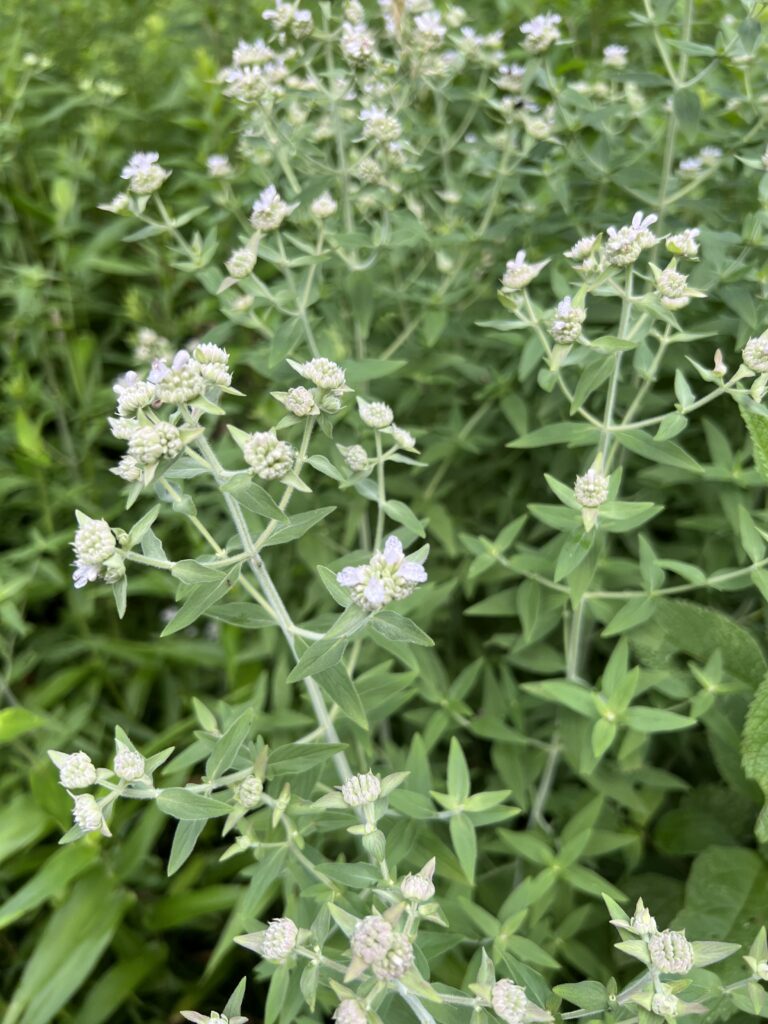
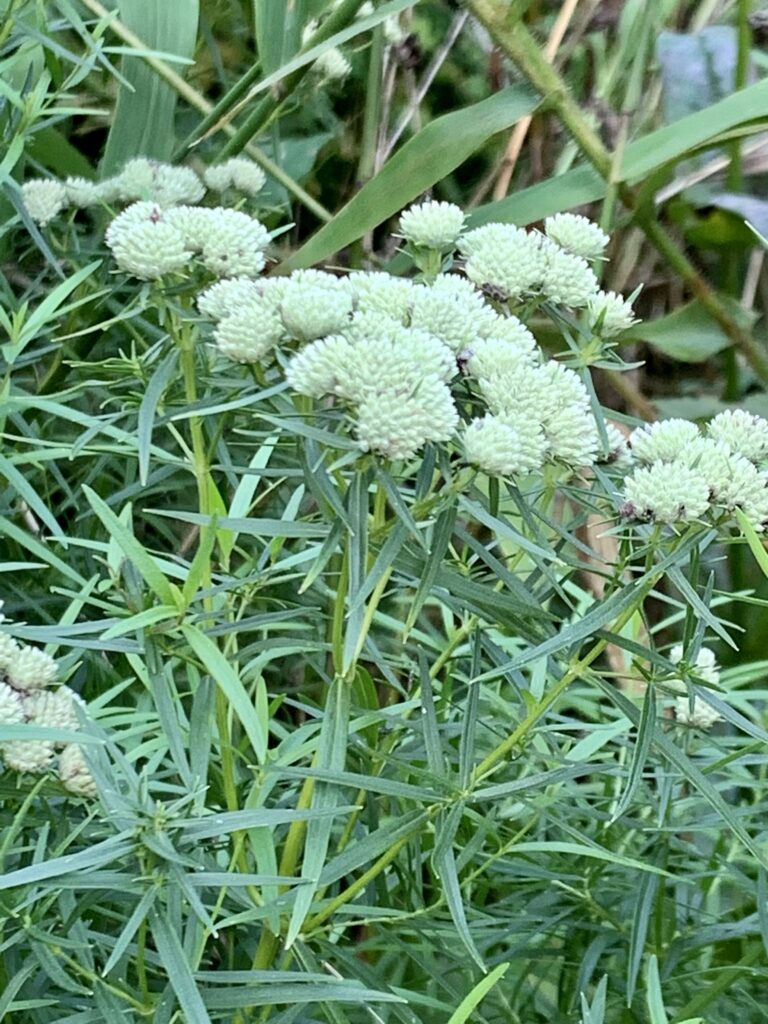
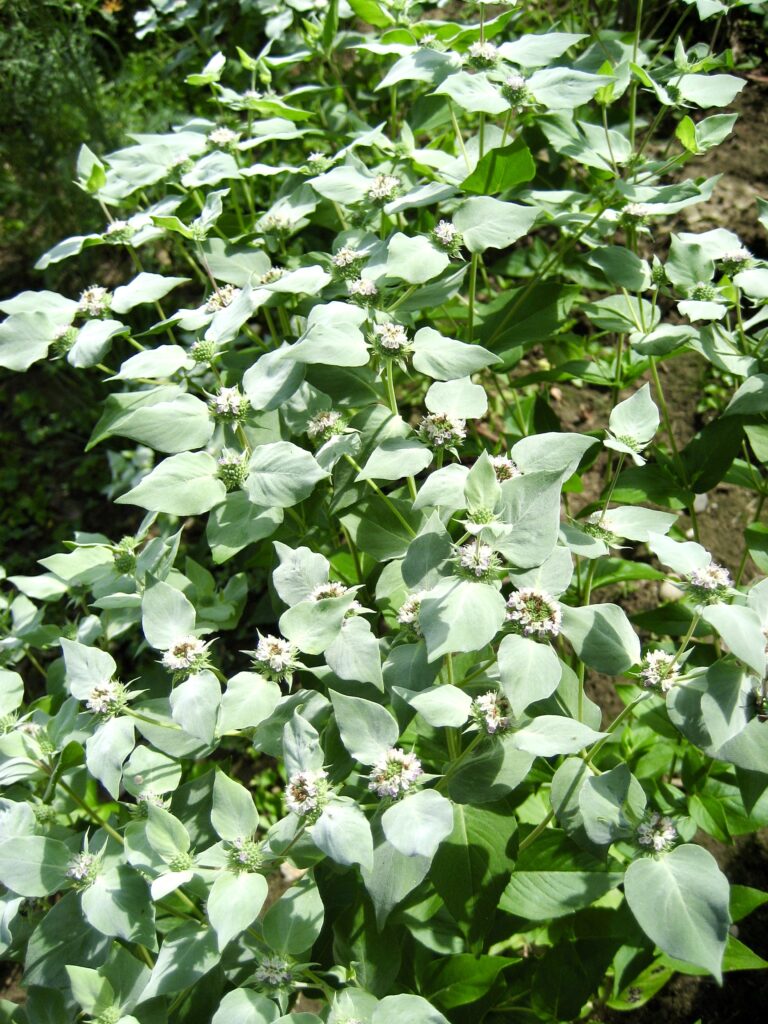
Our favorite is Broad-leaved Mountain Mint. The plant grows about 3 feet tall with shiny, dark green, and very minty leaves. In early summer, it produces a pair of fuzzy gray-green “bracts,” leaf-like structures that frame a cluster of flower buds at the very top of the plant. The flowers themselves are tiny little polka-dotted tubes that open sequentially over two to three months. The very long sequence of blooms keeps pollinators coming back all summer for fresh nectar.
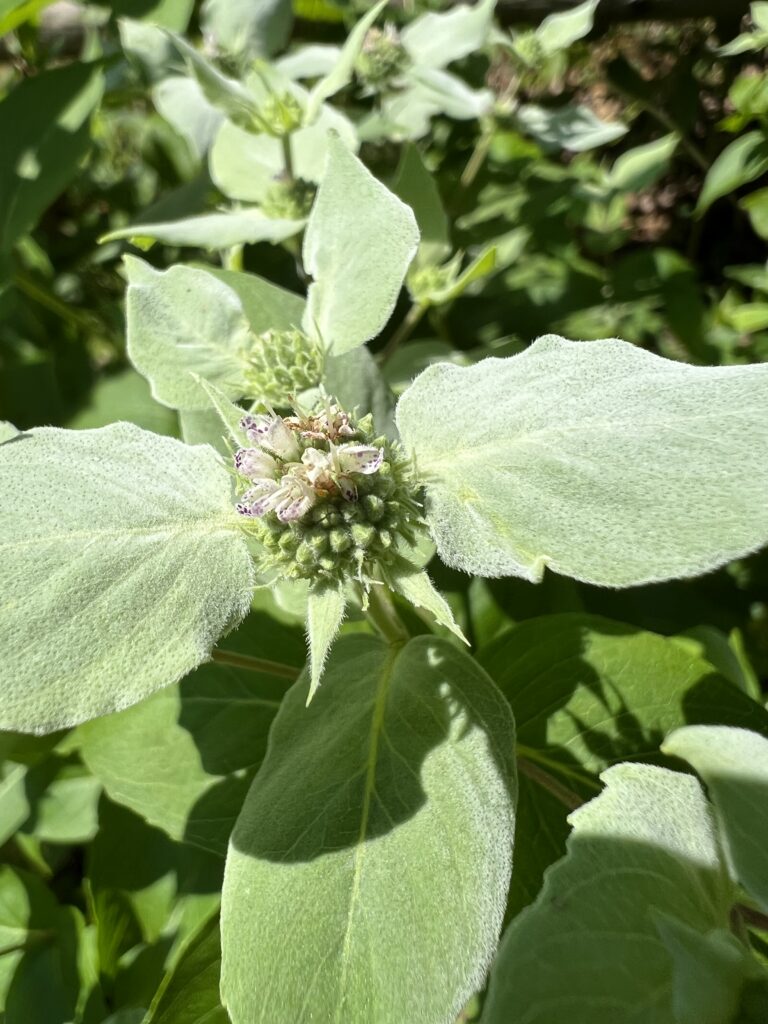
Mountain Mint is incredibly valuable for pollinator gardens. It is loaded with nectar attractive to bees, butterflies, and a wide variety of other pollinating insects. It is very entertaining to count how many different species visit the flowers.
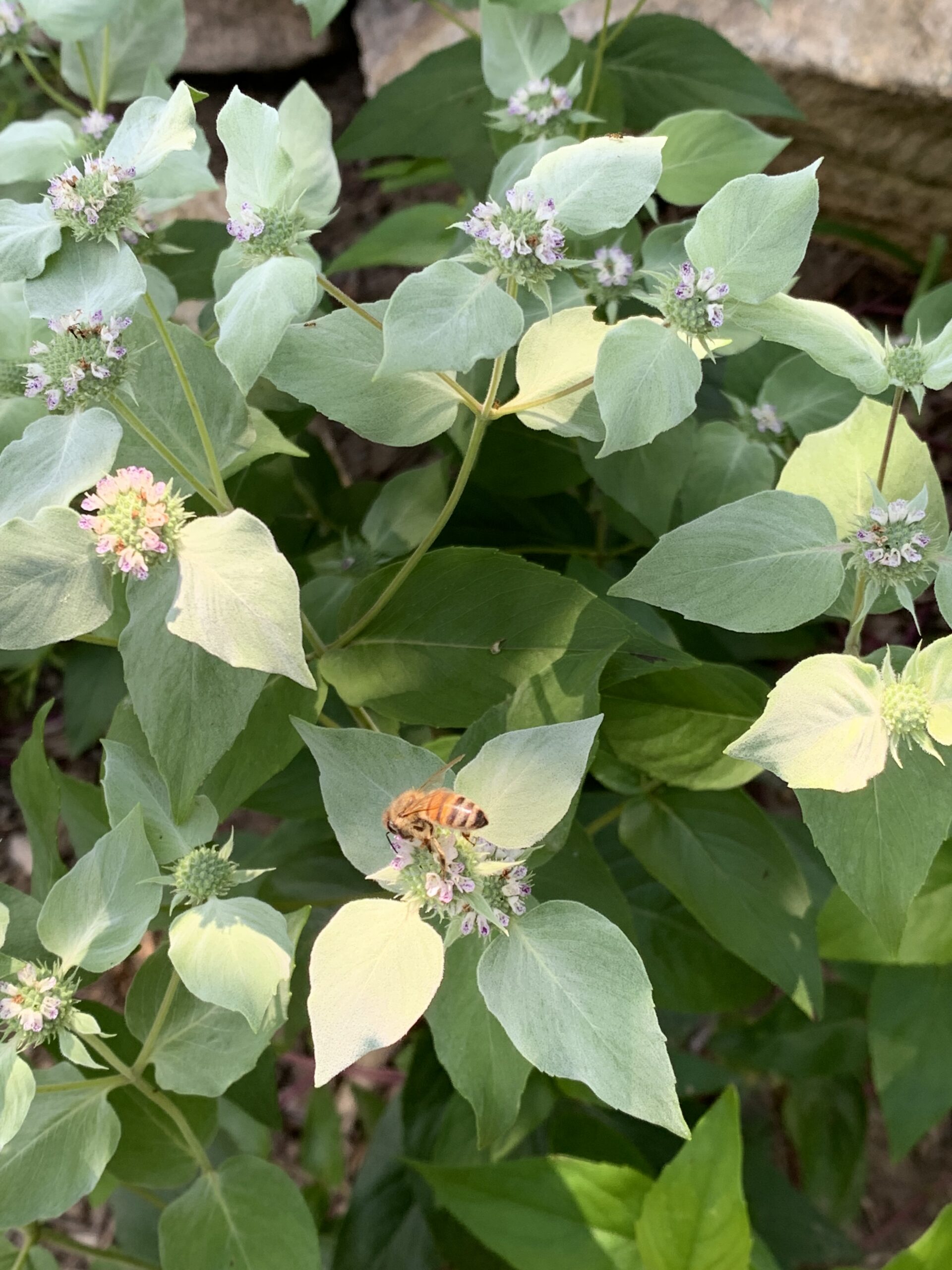
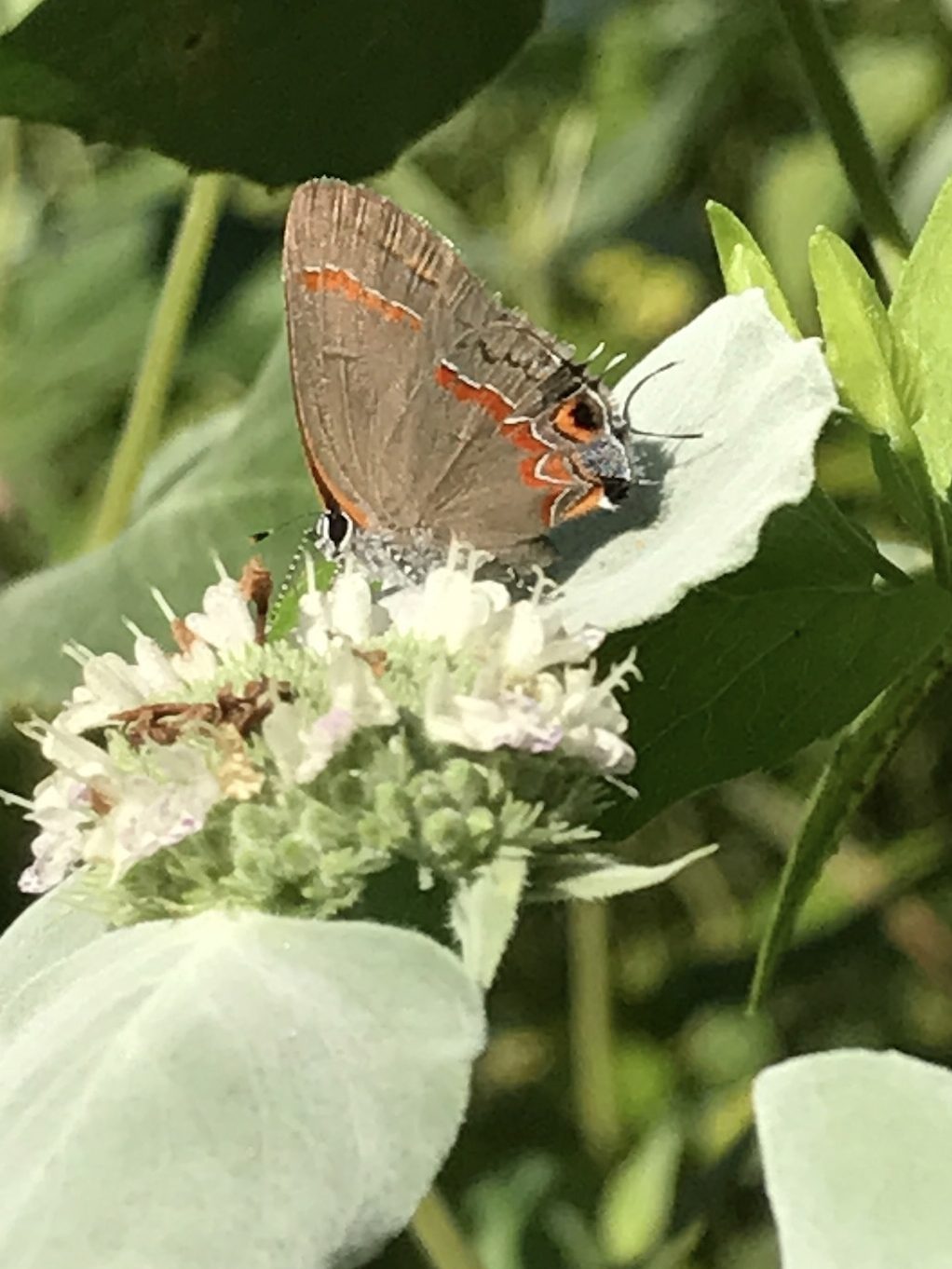
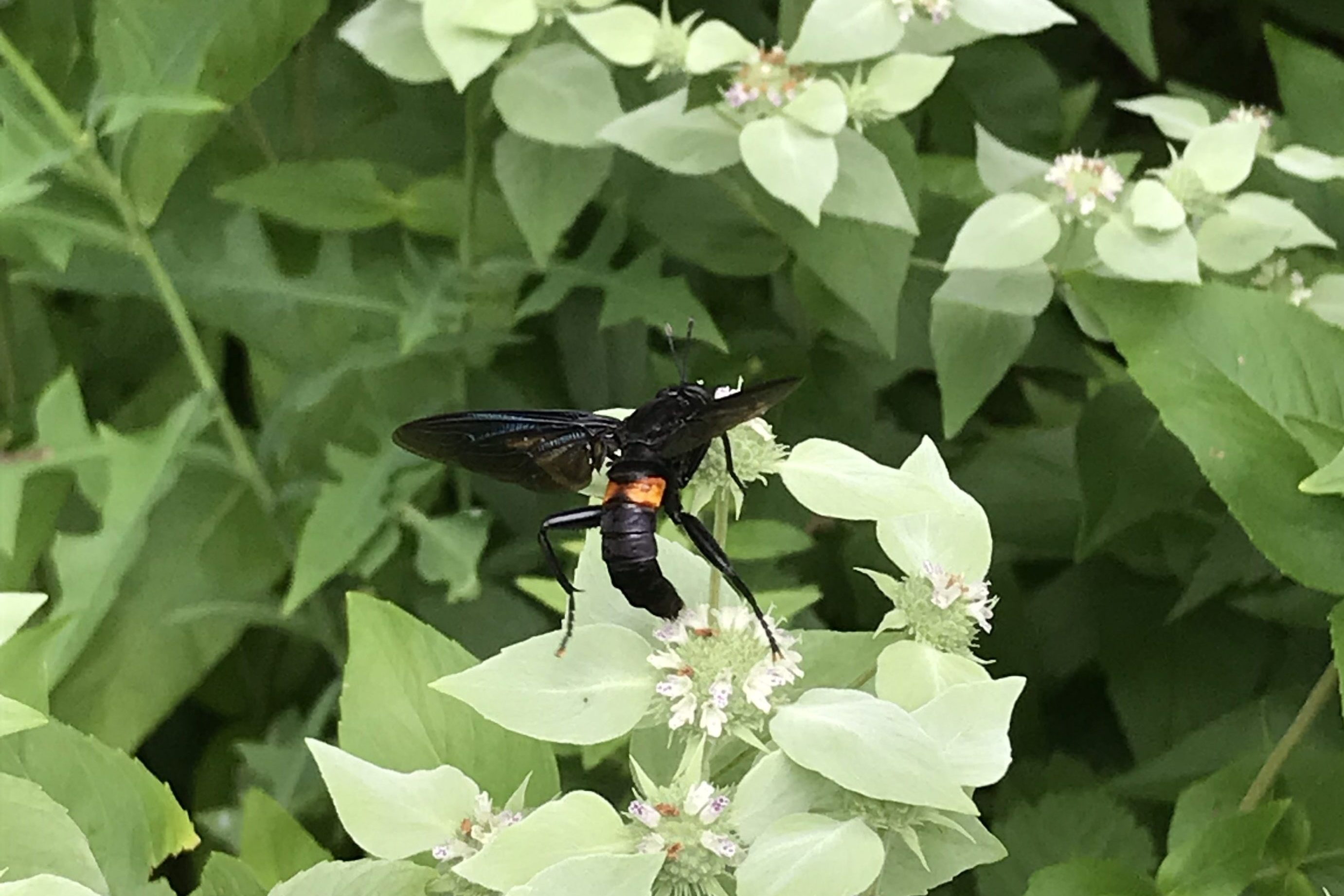
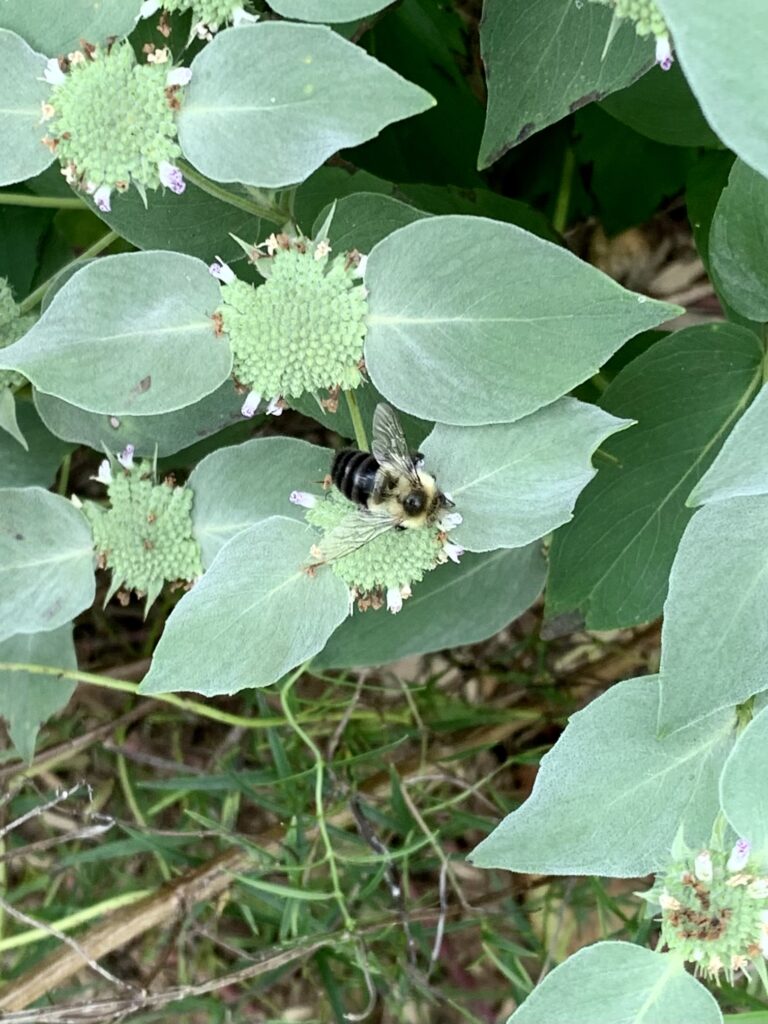

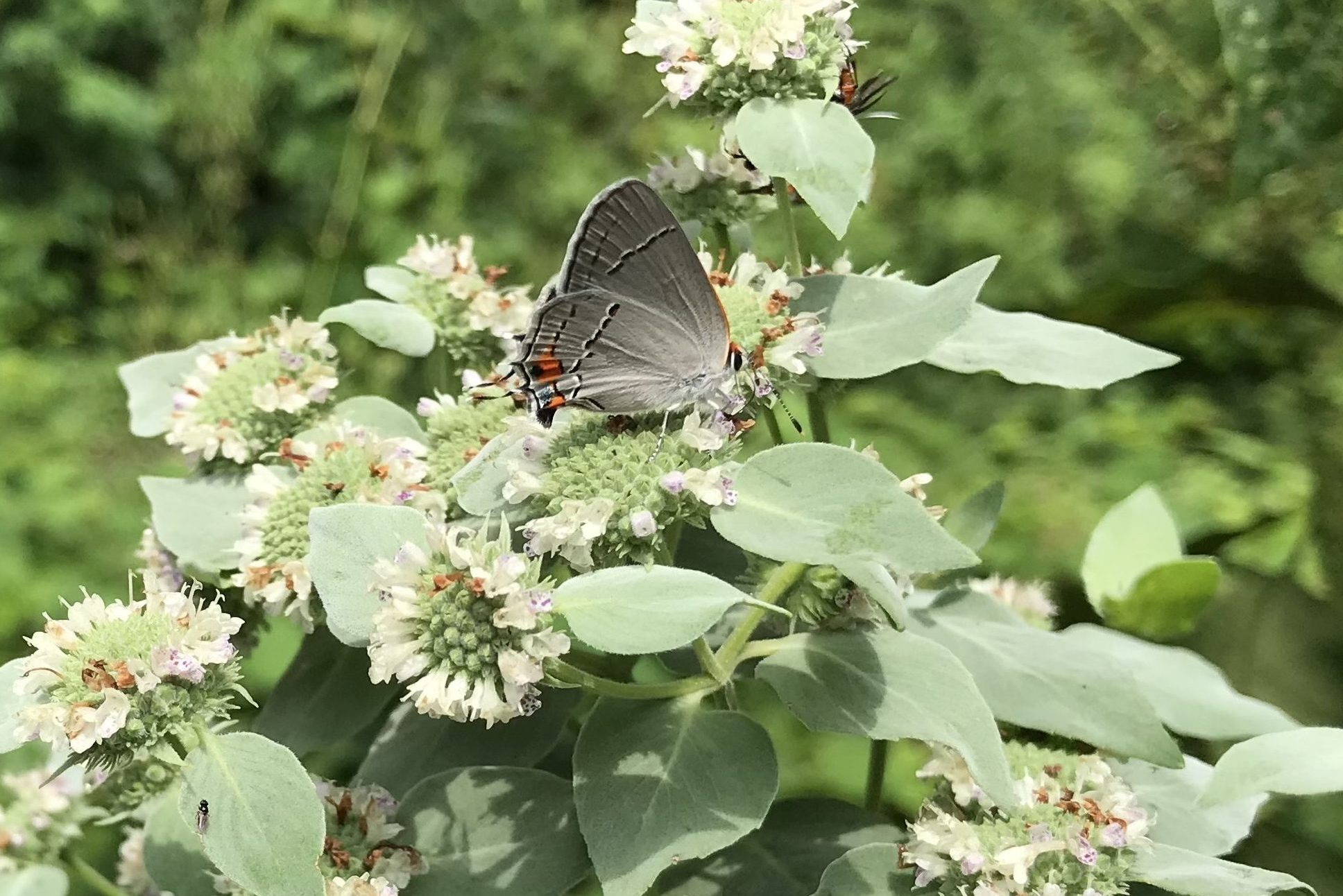
Apart from its value to pollinators, Mountain Mint is a wonderful garden perennial. It is tough! Deer, rabbits, and woodchucks avoid it. Like most meadow plants, it is drought-tolerant and does best in full sun, though the Broad-leaved species may want more moisture than Narrow-leaved Mountain Mint. Both are hardy in Zones 3 through 9 and both do well in our Meadow without irrigation. The long season of bloom means Mountain Mint looks good well into the fall, and the seed heads add interest if left standing all winter.
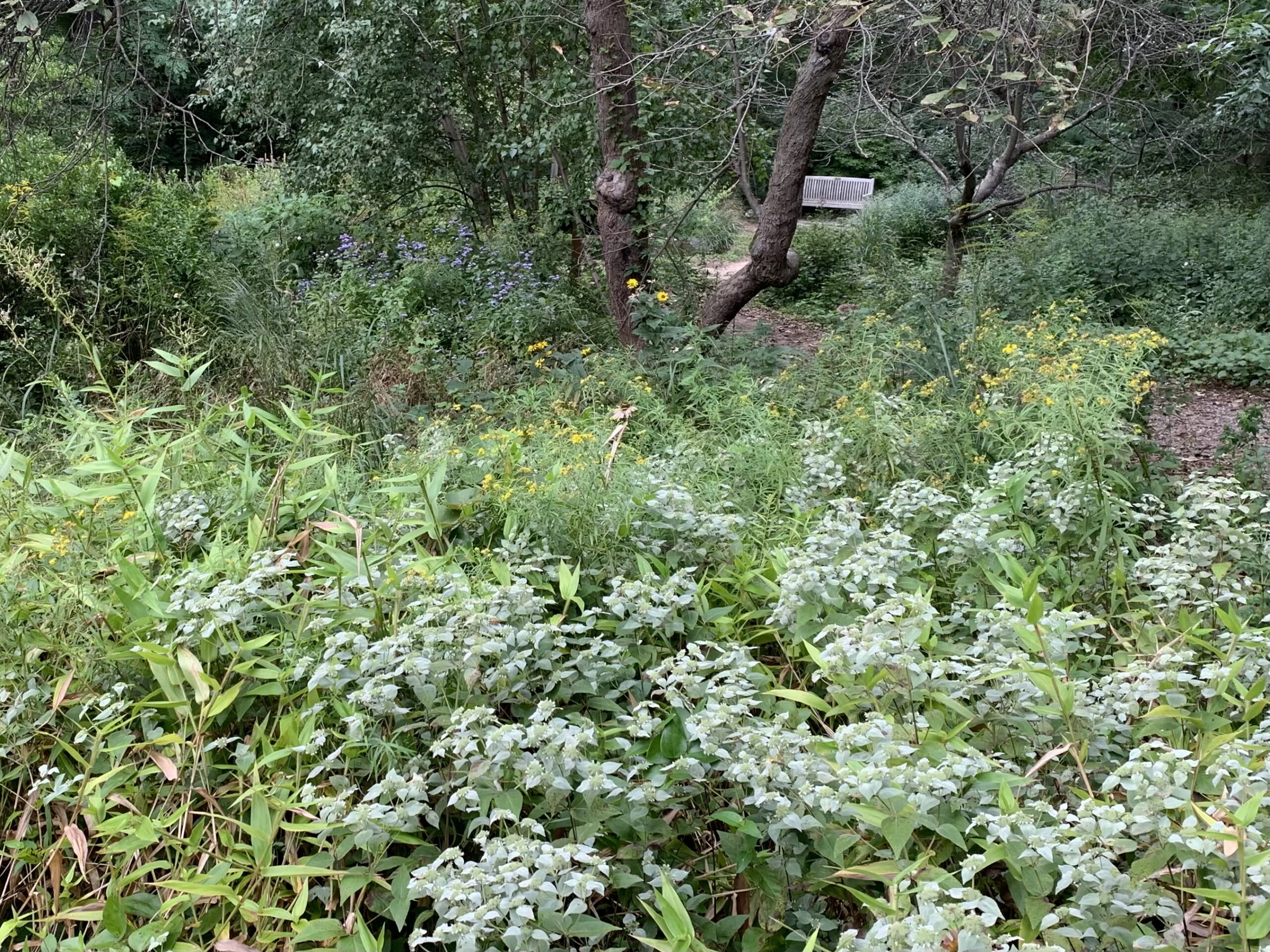
Mountain Mint has been used by humans for a wide variety of purposes. Indigenous people in the Eastern US made a tea from the leaves to treat headache, stomach problems, and respiratory congestion. Dried leaves of Broad-leaved Mountain Mint are said to make an effective insect repellant when rubbed on skin or clothing. Carrying fresh sprigs in a pocket or under a hat-band helps keep gnats and mosquitos away from gardeners’ faces. The leaves of Broad-leaved Mountain Mint contain pulegone, a substance said to cause liver damage if ingested in significant quantity. But reliable sources assure us that the leaves may be used safely in teas and infusions, and we have some satisfactory experience with that…
A handful of chopped leaves from Broad-leaved Mountain Mint boiled for a few minutes with equal parts sugar and water, then allowed to steep until cool, makes a lovely scented infusion for use flavoring lemonade, iced tea, or even a specialty cocktail! Strain the liquid to remove the leaves and add the syrup to your preferred beverage. Mix a bit of the syrup with gin, lime juice, and elderflower liqueur, and you have a Mountain Mint Martini!
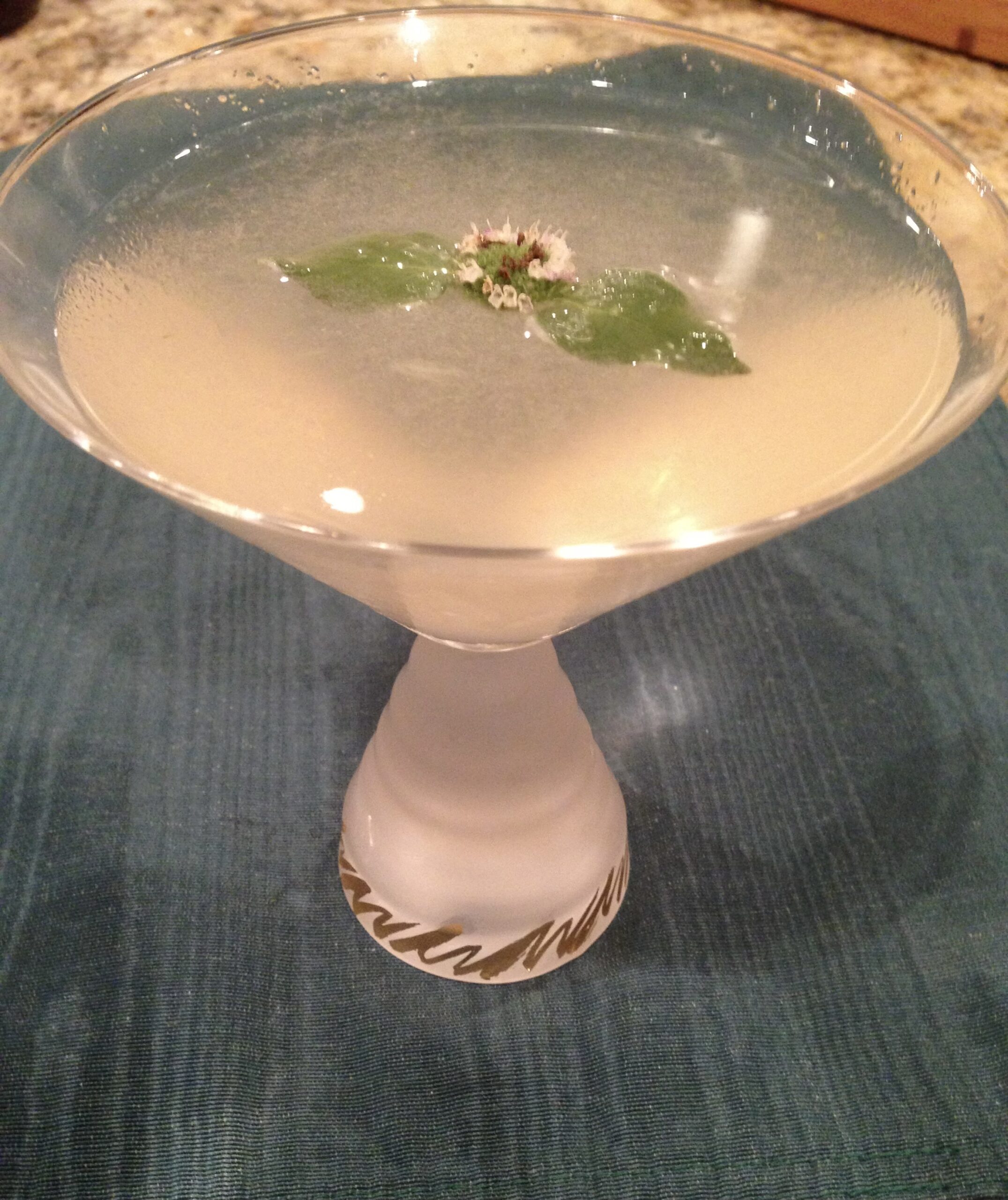

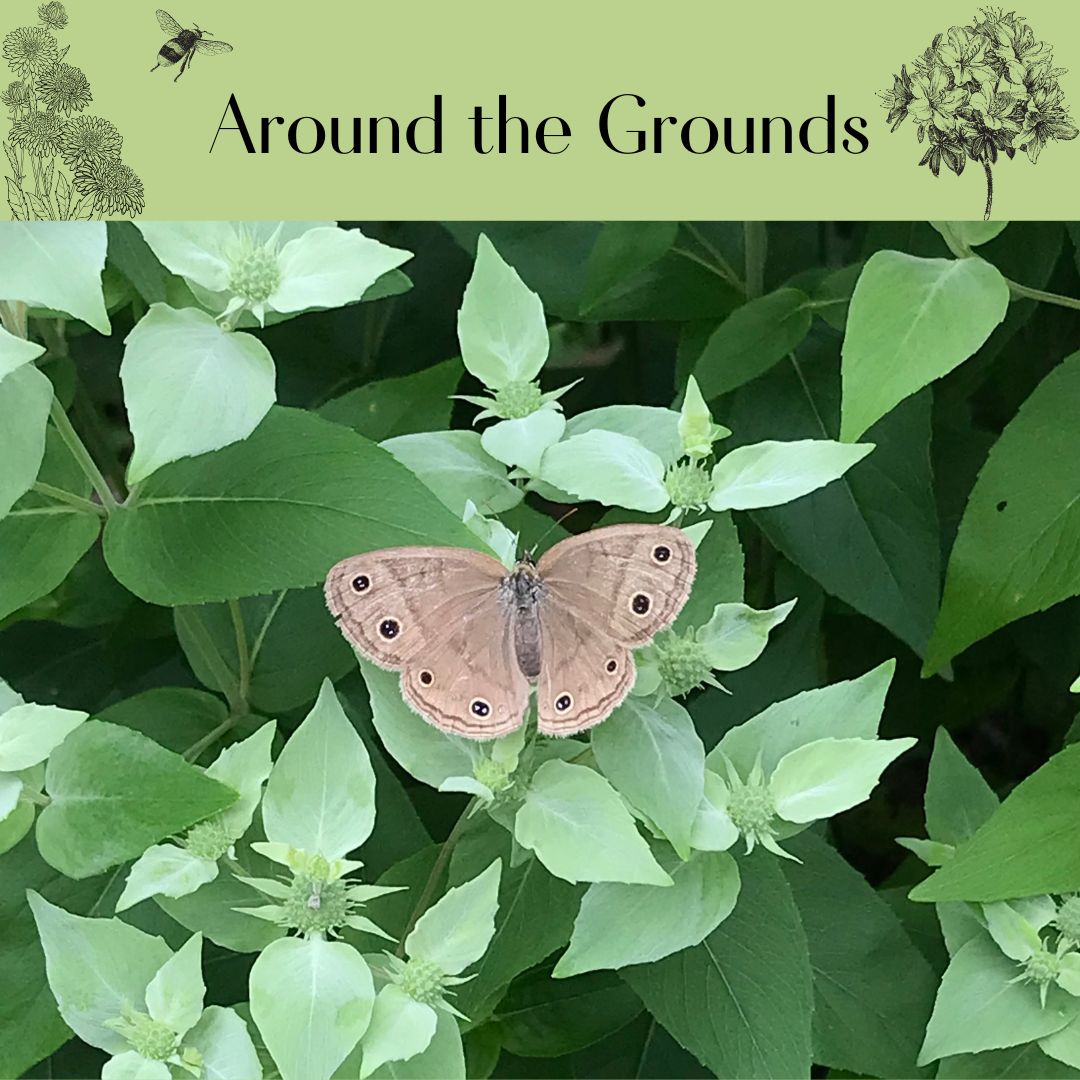
Is Mountain Mint typically sold in garden stores? I don’t have a “meadow”, but I’m trying to grow a pollinator garden.
Yes, good nurseries should have P. muticum, which is a pretty popular plant for pollinator gardens. And P tenufolium is appearing more frequently as pollinator gardens become more popular. Good luck!
My favorite out of the 3 is narrow-leaved mountain mint!
It’s a winner! It is more drought tolerant than the wide-leaved and mixes really well with native grasses. We have it edging the Pollinator Garden at the Nature Center.
I’m looking forward to edging my own Pollinator Garden this fall with this useful plant. Thanks, Cathy.
Great photos!
Great info – as always.
Many thanks!
I freeze the simple syrup. It’s a minty reminder of summer, in the middle of winter.
Great idea! I’ll have to try that!
What a wonderful blog about mountain mint! I want to add it to our garden and also loved the treat at the end. I’ll have one of those.
Thank you Cathy!
Coming right up!